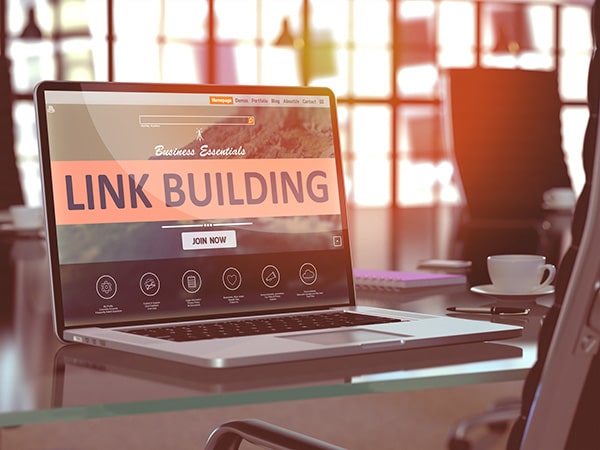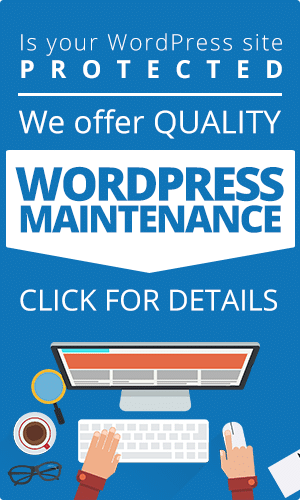How important are backlinks? As one of the top three ranking signals for Google, they represent a third of your SEO success. In other words, if you have a website and you want it to be noticed by search engines and users, you can’t ignore backlinks.
Building links is the process of enhancing your backlink profile. In this guide, we’ll lead you through everything you need to know about link building: its history, how to identify high-quality links, how to build links, and how to avoid search engine penalties.
Keep reading to learn everything you need to know about this crucial SEO best practice.
How We Got Here
Back in August of 1996, Google changed the world by releasing its first version. Sure, there were other search engines before Google came on the scene, but this search giant did something none of the other search engines did: PageRank.
The PageRank algorithm made link-building a key factor in SEO success. Keywords were still important, but PageRank looked at how web pages related to one another on the internet. In its early days, the more links you had pointing to your web page, the more popular your web page would be.
Over the last 20-plus years, Google has refined its algorithm. Now, quantity isn’t enough. Quality matters, too, perhaps more than the number of links you have. What is link building today?
Just like SEO in general, link building is now about relationships. It’s about making connections and improving visibility. It’s about providing users with valuable resources.
You can succeed at link building–not by buying and trading for hundreds or thousands of links, but by combining a number of skills to nurture relationships and provide valuable information to users. You’ll need to bring your best skills:
- Marketing
- Content creation
- Programming
- Sales
- Psychology
All of these skill sets will impact your ability to build a portfolio of high-quality links. If you’re ready to put them to good use, keep reading.
High-Quality Links
We mentioned in the previous section that previous practice had been to amass as many links as possible regardless of quality. But now that SEO linking strategies have adapted to please users, you need to understand what makes a high-quality link. For the sake of successful search engine optimization, we’ll cover how updates like Google Penguin define high-quality links.
Page And Domain Authority
Even though the PageRank algorithm of decades ago is outdated, a page’s rank–and a domain’s rank–still matter. They help Google define the quality of a link. The more authority a page and domain have, the higher the quality for link building SEO purposes.
There exist tools to help you identify the page rank, or URL authority, and domain authority. You can use these tools when you’re prospecting potential linking opportunities. We’ll get more into prospecting in the next section on how to build links.
Relevance
Whether or not a page linking to yours is relevant can also define whether it’s a high-quality link. For example, if your business provides contracting services, a link from a brand selling shoes is hardly relevant. Remember that Google’s goal is to provide users with valuable resources, which means linking them to content which answers their search.
Such content must be relevant to be useful.
Placement
When we talk about placement, there are a few types of placement to consider.
Where your link appears on another web page is important. A high-quality link will be placed in the main body, in the content. A lower-quality link will be tucked away in a footer or sidebar.
Editorial placement is another consideration. Basically, a link that is chosen because someone else values your content is considered editorially placed, and therefore higher-quality. If you create extra profiles around the web solely for the purpose of linking to your own sites, for example, those links are not editorially placed.
Anchor Text
Anchor text is the text that contains the hyperlink to your web page or content. While you want the anchor text to be relevant to keywords, you don’t want to overdo it. Too much anchor text matching keyword phrases can be considered spammy.
The same can be said about what’s known as co-citations. This is the text around and near the anchor text. It provides contextual understanding, and the same consideration regarding keyword phrases should be made.
Nofollow Vs Dofollow
When the tag rel=”nofollow” is added to a link, it degrades the quality of that link. This is because the tag tells search engines the link is not an endorsement of the linked content.
In contrast, a dofollow link provides that endorsement and is, therefore, a higher-quality link.
Guest Posts, Blog Comments, And Forum Posts
When the goal in link building was simply to get as many links as possible, these methods were heralded as the golden geese of SEO. Nowadays, more care is needed because employing these efforts can be considered spammy behavior.
Here are some red flags that Google might use to devalue a link from these sources:
- The post has keyword-phrase exact-match anchor text
- The post exists on a site which has the sole purpose of publishing such posts
- The post exists on an unrelated site
High-quality links are more difficult to obtain, but they’re well worth the effort. In the next section, we’ll show you how to go about getting these links.
Building Links: A How-To
Now that you have an understanding of link building and what defines a high-quality link, the time has come to show you how to get these most coveted links. We’ll cover three main methods to improve your backlink profile: producing linkable content, prospecting for links, and participating in interviews.
Content Creation
One of the most natural ways to gain high-quality links is to produce content others love to link to. This is one of the most effective link building strategies for quality, but it also can require the most patience.
The key is in knowing what kind of content to produce. There are four types which tend to provide the most opportunity for high-quality backlinks:
- In-depth guides like this one
- Listicles: articles arranged in easily-digested list items
- Visuals like infographics
- Case studies and original research
This type of content can be time-consuming to create, and where the text is concerned, should be what’s considered long-form. Long-form content is more than 1,000 words and is more likely to be shared and linked to.
Because simply putting content out into the world is the slowest way to build backlinks, this method is best when combined with prospecting for links.
Link Prospecting
This process involves reaching out to others and enticing them to link to your content. Hopefully, you have produced some of the content we discussed above as landing pages. We also recommend producing some scripts for each type of request.
The next step is finding sites to reach out to. One method is to look for broken links. There are tools available to you that will help you identify sites with broken links. Once you’ve found them, you can alert the brand to the broken link and invite a link to your content instead, adding value to the brand’s site and yours.
You can also search for your own brand to see who might be talking about you without linking to you. This process is known as link reclamation. Oftentimes, brands are happy to add a link to yours with a gentle request to do so.
You can also use a tool to find any unlinked brand mentions. In the same vein, you can do a reverse image search via Google to see if anyone is using your visual content without linking to you.
Finally, you can hunt for resource pages–other websites providing the type of content we discussed before. You can reach out via email and try to entice them to check out your own, relevant content. Make sure you look at the domain authority and URL authority of any content you deem as a resource page.
One last note: Since this method involves reaching out via email, you want to make sure you send your email at the right time of day. Sending on weekdays, between 10 am and 2 pm, will give your message the greatest chance of success of being read.
Interviews
Giving interviews is a fantastic way to get high-quality backlinks. These opportunities can seem few and far between, but there are ways you can cultivate them. For example, you can search for relevant podcasts and offer to share your expertise.
Another method is to subscribe to Help a Reporter Out, or HARO. This listing provides opportunities direct from reporters seeking experts to interview. This can be an effective tactic to not only generating high-quality backlinks but to also share your industry expertise and knowledge, increasing trust between your brand and consumers.
Now that you know how to start building high-quality links, there’s one more crucial thing to understand: avoiding penalties. We’ll cover this in the next and last section of our ultimate guide on link building.
Avoiding Penalties
In a couple of instances above, we’ve mentioned spammy behavior. Such behaviors may be considered black hat SEO and may put you at risk for penalties from search engines. You should steer clear of black hat SEO behaviors on all fronts, not just link-building.
In this section, we’ll talk about two kinds of penalties you can receive for black hat link building, though black hat SEO, in a broader sense, may lead to other penalties.
Penguin/Automatic Penalties
Google’s Penguin update automatically levies penalties for links that are deemed spammy. Guest posts on sites that exist only to publish guest posts are one example we’ve mentioned that might lead to a Penguin penalty. The only way to avoid this type of penalty is to engage only in white hat linking practices.
The other downside to Penguin penalties is you cannot manually request their removal.
Manual Penalties For Unnatural Links
A manual penalty is levied by a person who works at Google. Basically, your link or your site is flagged for using unnatural links, and the Google staff member reviews the flagged content or link to determine whether or not a penalty is called for.
Should you receive one of these penalties, you’ll find out via a message delivered in Google Search Console, formerly Google Webmaster Tools. You can try to get this type of penalty removed.
In order to do so, you’ll need to first get rid of any unnatural links. Then, you need to submit a request for reconsideration. There’s no set timeline for a response to this request.
Because of this, it’s best to simply avoid this penalty from the start. The best way to do so is to ensure that your backlink profile is as clean as can be.
The best way to avoid any penalties is to always remember the goals of link-building we mentioned in the beginning: nurturing relationships, enhancing visibility, and offering end-users valuable and relevant information.
By seeking to serve end-users instead of only your own interests, you will be able to avoid black hat linking practices. In turn, you’ll serve your own needs anyway by serving the end-user and therefore the search engines.
Conclusion
Congratulations on learning all about building links.
Let’s do a quick recap: We looked first at the history of link building, and how Google changed the game with its PageRank algorithm. Then, we examined the nature of high-quality versus low-quality links. We helped you learn how to get great links and finally, we discussed the possible penalties for black hat practices.
Even though this is an ultimate guide, and we hope it answers all of your questions about link building, it’s possible you might still have a question or two. After all, gaining new knowledge often opens possibilities for new questions.
We’d love to help you with your link-building efforts to improve your SEO. Drop us a line to discuss our SEO services and make the most of your efforts. If we have answered all your questions, we wish you the best of luck with your link-building.
Then again, now that you’ve read this guide, you don’t need luck.






